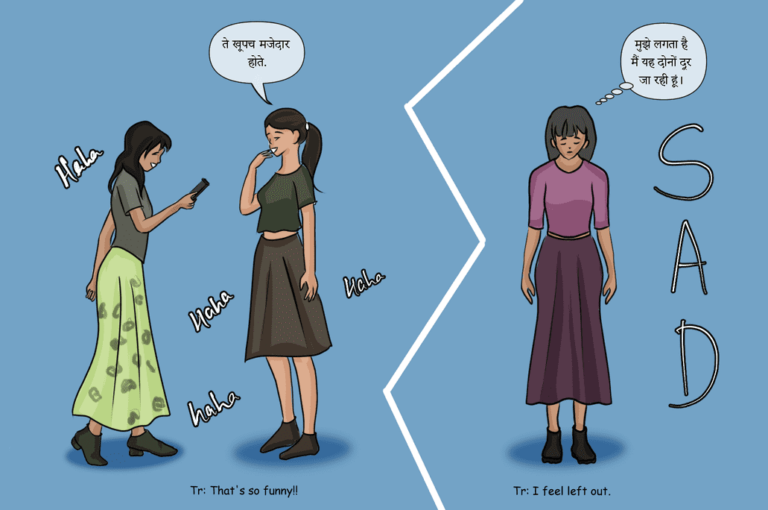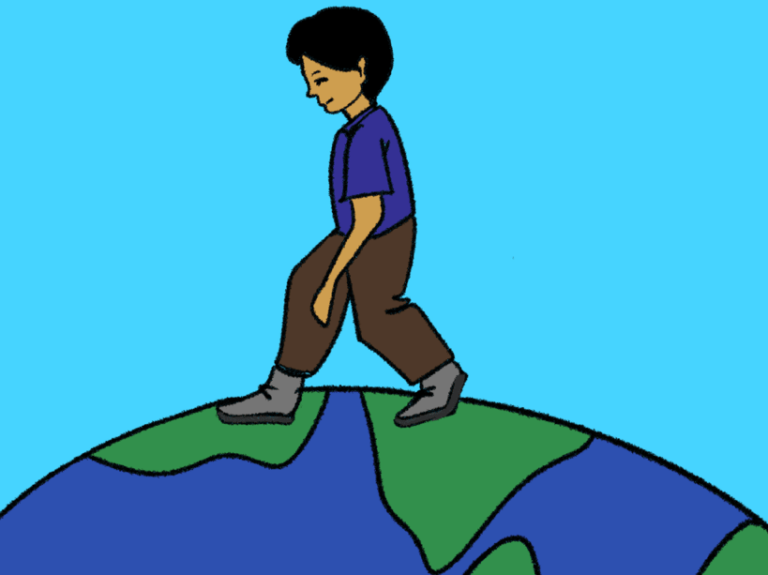Vulnerable languages fading into oblivion

Ananya holds a postgraduate degree in Political Science from Lady Shri Ram College. Her research interests are political communication, electoral politics and international relations of South Asia. She is also fascinated by the field of cognitive psychology.
Every 14 days, a language perishes. It is estimated that there are more than 7,000 living languages used in the world, but at the current rate of language loss UNESCO predicts that half of them will be extinct by 2100. Over the decades, our world has suffered the death of hundreds of languages and with it an immeasurable cultural loss.
On February 21 each year, International Mother Language Day is observed globally to promote linguistic and cultural diversity and advance the United Nations Sustainable Development Goals’ focal point on leaving no one behind. At present, many susceptible communities face the loss of their languages that are declared by UNESCO as vulnerable.
It is rather difficult to compare levels of language endangerment as each language is in a different situation affected by varying factors such as cultural, historic, linguistic, geographic, religious, economic, political and demographic. Nevertheless, this mammoth endeavour was undertaken by UNESCO which has classified languages into degrees of endangerment.
5 vulnerable languages housed on 5 different continents
These are some of the vulnerable languages that still have fluent speakers so there are greater chances to support communities in efforts to revitalise these languages and keep them alive and strong for future generations.
1. Gondi (India)
Gondi language is the native language of the Gonds tribes of central India. The Gonds are the second largest tribal group in central India. Gondi originally belongs to the Dravidian language family mainly spoken in the Indian states of Madhya Pradesh, Maharashtra, Chhattisgarh, Odisha, Telangana and Andhra Pradesh. Over time with the ever-present influence of other dominant languages in the region, Gonds of some states have lost their languages and now speak varied languages. Gondi, the language which at one time was the official language of an ancient kingdom called Gondwana with its own script and grammar is now decaying with no well-defined linguistic boundaries.
2. Yulu (South Sudan)
Yulu is a Nilo-Saharan language spoken by the Yulu people within neighbouring African countries of South Sudan, Sudan, the Central African Republic (CAR) and the Democratic Republic of the Congo. It has been written using Latin script since the attempt in 1928 to standardise a writing system for the region’s indigenous languages. As the home to diverse linguistic and cultural groups, there are between 30 to 50 languages spoken in South Sudan. However many Sudanese prefer to speak Arabic due to heavy influence and contact with Islamic and Arabic culture. The Yulu has been severely disorganised due to feuds with their neighbours and migration to the north resulting in social and language disintegration.
3. Hawaiian (United States)
Hawaiian is an ancestral language that takes its name from Hawaiʻi, the largest island in the tropical North Pacific. It is one of the two official languages of the US state of Hawaii along with English. However, it is not the dominant language in the region and is considered a minority language. An interesting fact about the language is that the Hawaiian alphabet has only 13 letters. The decline of the language is a consequence of multiple factors such as the arrival of more English speakers, assimilation into American culture and migrations away from the area.
4. Quechua (Peru)
Quechua is the language spoken by South American indigenous people of the central Andes. Quechua, known as Runasimi (the language of the people) by native speakers, is spoken largely in Peru, Ecuador, and Bolivia, as well as in Colombia and Argentina to some degree. It originated among the communities in Central Peru. It is still spoken by around 3 million Peruvian population. The case of Quechua is interesting as it is the first language of such a large number of people and is still considered a vulnerable language by UNESCO. The reasons behind this confounding situation are that Quechua remains a largely spoken rather than a written language, considered a backward language and eclipsed by the omnipresence of the dominant language; in this case Spanish.
5. Irish Gaelic (Ireland)
Gaelic is a Celtic language that was used by the inhabitants of Britain before the Roman (54 BCE) and Norman (1066 CE) invasions. Due to multiple successive invasions, it was driven westwards resulting in its minority status today in Scotland, the Republic of Ireland, the Isle of Man, Wales and Brittany in France. Irish Gaelic, is an EU official language as well as the official language of the Republic of Ireland. However, as with so many other languages, it is losing its speakers to the dominance of the English language in both urban and rural areas. Fewer Irish citizens are using Irish Gaelic owing to a combination of warfare, English- established centres of commerce, famine, emigration and legal prohibitions against the Irish that have influenced this gradual shift.
Why do languages die?
In the book, ‘Language Death’ by David Crystal, he delineates three reasons that contribute to the level of endangerment of a language. They include the attitude of the whole community to the language, the rate of acquisition by the children and the level of impact of other languages which may be threatening it.
- Attitude of the community to the language
- Many native speakers may perceive their language as inferior to the majority language of their region. As a consequence, speakers gravitate towards the dominant language and stop using the minority language on all occasions. Eventually, this attitude is inherited by the younger generations. A striking example is the widespread preference and adoption of English over other minority, tribal and indigenous languages. The attitude towards English as the language of modernisation and minority languages as backward is one big reason behind the deaths of many languages.
- Rate of acquisition by the children of the community
- As successive generations of speakers become bilingual, they begin to lose proficiency in their traditional languages. One reason this occurs is due to the motivation to learn a more esteemed language as a way to secure social and economic advantages or to avoid discrimination. The decline of Yulu and the adoption of Arabic or preference of Spanish over Quechua to access better economic opportunities and social assimilation are a few instances wherein children of the communities are taught dominant languages. Thereby, resulting in diminishing competence in indigenous languages.
- Impact of other languages
- Some languages are preferred over others. Minority languages have been displaced by dominant languages within the same population. Preference for English as a lingua franca over Hawaiian and Irish Gaelic are two instances discussed in this article itself. The majority of languages dominate over other languages as proficiency in English and Spanish is often associated with higher incomes as well as increased opportunities in areas of employment, trade and international business.
Revitalizing vulnerable languages
Languages thrive when their communities respect the repository of culture, history and traditions that are embodied within languages. Saving a language is an enormous responsibility that requires the commitment of the community at a large scale.
Crystal (2014) suggests several common ways for the revitalization exercise that will apply to varying situations of different languages. Some of them include:
- Recognizing the language as an official regional language.
- Introducing or enhancing the presence of language in schools to make it a medium of instruction and language of study
- Standardising the language in both written and spoken form to enhance the usage
- Expanding the use of written and spoken language in the public domain;
- Encouraging speakers to use the language within their households to support intergenerational retention and transmission of languages
- Publishing texts in the language covering a variety of genres in the public domain to spark general public interest
Another approach to language revitalization can be to listen, engage and create melodious music in these languages. An example of musical efforts to revive language is that of Punta Rock sung in Garifuna, the native language of Central America’s Afro-Indigenous Garifuna community. Punta rock is a form of Garifuna music originating in Belize and created by Pen Cayetano. Garífuna (Belize) was listed as a vulnerable language in UNESCO’s Atlas of endangered languages. While Garifuna remains on UNESCO’s endangered-language list, multiple music tours around the world and international music awards have brought Garifuna culture, language and music worldwide positive attention and respect. Language revival is a long journey stretched over multiple generations but the works of Garifuna musical activists have given the dying language a second lifeline.
In ongoing efforts towards the preservation, revitalization and promotion of indigenous languages the United Nations General Assembly declared that the decade from 2022 and 2032 will be marked as the International Decade of Indigenous Languages.
“Language is the blood of the soul into which thoughts run and out of which they grow.” – Oliver Wendell Holmes
The Sapir–Whorf hypothesis also known as the hypothesis of linguistic relativity proposes that language shapes the way people think about reality. Each language has its variation of grammar, sentence structure and words that determines how one sees and interprets the world also understood as linguistic determinism. The disappearance of language is equivalent to the loss of culture, heritage, identity and generational memory. Indigenous languages are a gateway to understanding a complex arrangement of knowledge and traditions. So, once the key is lost, it will be very difficult to unlock it again.
“A special kind of beauty exists which is born in language, of language, and for language.” – Gaston Bachelard
Bibliography
Boruah, D. M. (2020). Language Loss and Revitalization of Gondi language: An Endangered Language of Central India. Language in India.
Crystal, D. (2014). Language Death. Cambridge University Press.
Loh, J., & Harmon, D. (2014). Biocultural Diversity: threatened species, endangered languages. WWF Netherlands.
McGee, P. (2018). Endangered languages: The case of Irish Gaelic. Training Language and Culture, 4, 26–38. https://doi.org/10.29366/2018tlc.2.4.2
United Nations Educational Scientific and Cultural Organization. (2010). Atlas of the World’s Languages in Danger. https://unesdoc.unesco.org/ark:/48223/pf0000187026







